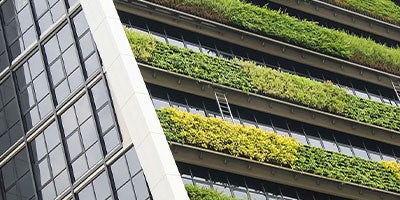For their part, investors seeking a presence in sustainability need to evaluate where they want to play: in a high-growth category, a more-or-less-accepted sustainability offering, or some other part of the market.
- Underserved, high-growth product categories: Concrete, roofing and siding
- High-growth categories where current sustainable offerings meet property owner needs: Windows/doors, HVAC and insulation
- More well-established and mature markets: Lighting, windows/doors, flooring and insulation
Hence, a consideration is whether to invest in categories with a relatively strong sustainability profile versus categories that have significant opportunities for improvement. Indeed, the need to improve a category/subcategory’s sustainability performance and/or the sustainability performance of companies within the category might be viewed as an opportunity rather than a risk management area to be avoided. Factors such as the energy intensity per dollar of revenue or per unit of production, the emissions profile, the degree of exposure to regulation and/or customers, and the company’s lack of adoption of sustainability actions (e.g., operations initiatives, new product development) are factors that indicate potential opportunity for sustainability and business improvement. Investors can develop frameworks to evaluate where an opportunity to improve the sustainability profile exists and combine them with traditional growth selection criteria such as size of market or growth rate to identify subcategories and the companies within them.
The value in building green
Sustainability is a nuanced challenge in building and construction. The approaches that are most effective according to science and measurement may not be practical from the perspective of an industry professional. In our survey, builders, general contractors and architects reveal that satisfaction and the pace of adoption vary not just across, but within, product categories. Those gaps spell opportunity for those looking to invest in the future of building products and materials.










